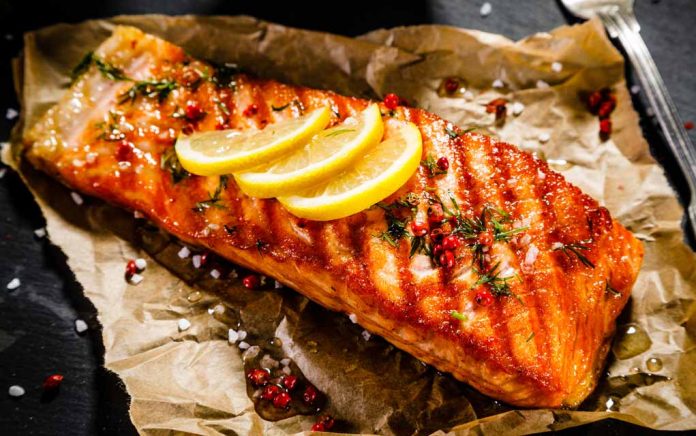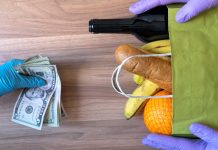
Can you tell the difference between wild-caught Pacific salmon and farmed Atlantic salmon? Would you know if your favorite restaurant switched them on you? Mislabeling is a huge problem in the fish industry, and salmon vendors have proven to be some of the worst offenders.
A recent study revealed 43 percent of salmon sold in stores and supermarkets are mislabeled, the majority being farm-raised fish sold as wild-caught. Farm-raised salmon can be riddled with toxins and antibiotics, with fewer Omega-3 fatty acids and more saturated fat. You can tell wild-caught salmon by color, time of year it’s sold, and price. Get the facts on how to tell if your salmon is really wild-caught by checking out the full story below.
Is that Salmon Really Wild-Caught? We Can Help You Figure It Out.
Startling Statistics
Oceana, a wildlife conservation group, took salmon samples from 82 different locations. DNA testing revealed 43 percent of the samples were mislabeled. Nearly 70 percent were farm-raised salmon being sold as wild-caught, although some places also sold cheaper species as more expensive ones, such as sockeye and Chinook. Restaurants were the worst offenders, misrepresenting the types of fish they served about half the time.
Why It’s Important
Farmed salmon has over 20 percent more saturated fat than its wild counterpart, and it packs more calories per serving. It also contains between five and 10 times as many persistent organic pollutants (POPs), chemicals and industrial byproducts that are harmful to human health. Some POPs are carcinogenic, such as dioxin, and researchers are concerned that even occasional consumption of farmed salmon could have negative health effects.
Another concern is antibiotic exposure. Chile is one of the world’s largest salmon producers, and its fish farmers have a history of abusing antibiotics. In 2016 alone, Chile dumped 382.5 tons of antibiotics into its fish farms. The impact this could have on humans is devastating enough, but the effects of so many chemicals possibly escaping into the ocean could be catastrophic. It’s a perfect storm for the creation of drug-resistant disease. Lawmakers have placed stricter regulations on antimicrobial use, but no one can really say how well they’re being enforced.
Telling the Difference
You don’t have to be fooled by dishonest labels. Make sure you’re eating the fish you paid for by watching for the following red flags:
- Salmon that is a pale pink-orange color: Wild salmon come in brilliant tones of red and orange, much darker than the pale hue you see in farm-raised fish. This is because wild salmon take on pigments from the krill they naturally eat. Farm-raised salmon don’t have access to krill, fed cheaper pellets instead, so farmers add food dyes to give the fish their color instead.
- Salmon that’s available off-season: Alaskan fishermen typically do all of their catching between April and September. It’s best to buy your salmon then.
- When the price is a steal: Wild-caught salmon runs around $20-30 per pound. If it’s any lower than that, it’s probably farm-raised.
The salmon market might be flooded with labeling fraud, but that doesn’t mean you need to be a victim. Be your own biggest advocate and make sure you know what you’re buying. As with nearly everything in life, if it seems too good to be true, it probably is.
~Here’s to Your Healthy Ascension!
Copyright 2019, AscendHealthy.com













